Average True Range (ATR) Indicator

It is used to measure market volatility by calculating the average range of price movements over a specified period of time. Traders use the ATR indicator to help them identify potential trends, set stop-loss levels, and determine entry and exit points in the market.
How the ATR Indicator Works
The ATR indicator measures the average true range of price movements over a specified period of time. The true range is calculated as the greatest of the following values: the difference between the high and low prices of the current period, the absolute value of the difference between the current period’s high price and the previous period’s close, and the absolute value of the difference between the current period’s low price and the previous period’s close. The ATR indicator then calculates the average true range over the specified period of time.
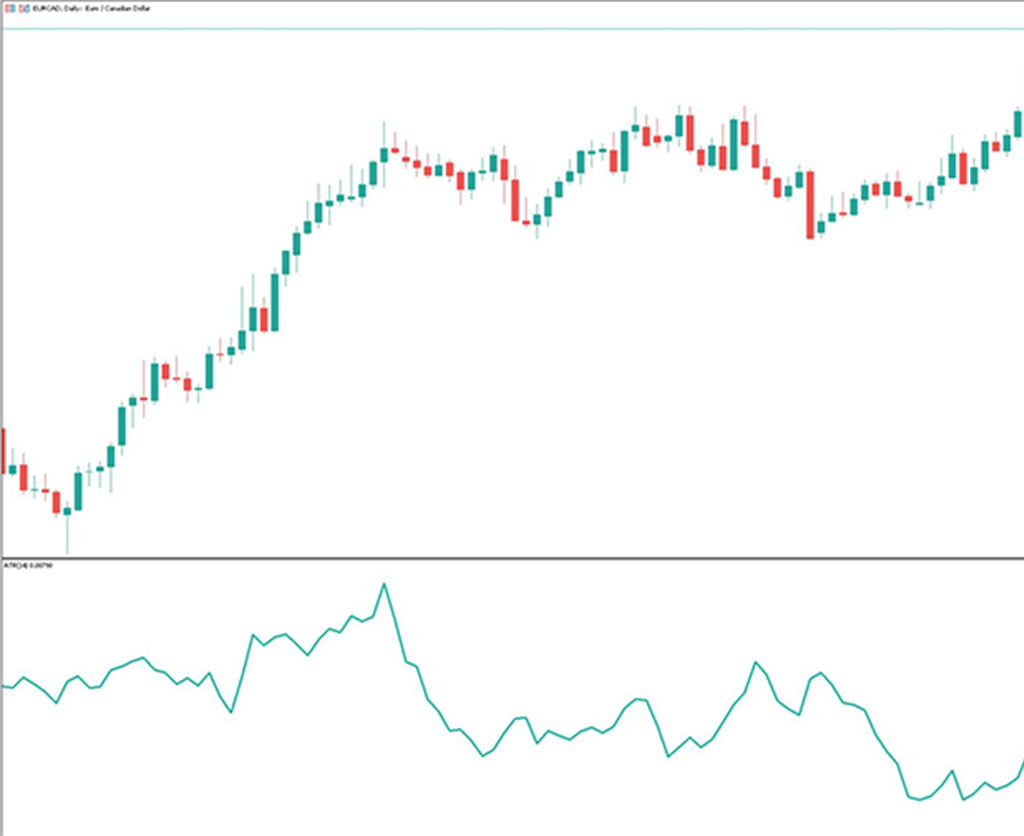
How to Use the ATR Indicator in Forex Trading
The ATR indicator can be used in a variety of ways in forex trading. Here are some common ways traders use the ATR indicator:
Identifying Potential Trends:
The ATR indicator can be used to identify potential trends in the market. When the ATR line is moving upward, it may indicate that volatility is increasing, which can signal the start of a new trend. When the ATR line is moving downward, it may indicate that volatility is decreasing, which can signal the end of a trend.
Setting Stop-Loss Levels:
The ATR indicator can help traders determine an appropriate stop-loss level by calculating the average true range over a specified period of time and setting the stop-loss level a certain number of pips or points away from the current market price.
Determining Entry and Exit Points:
Traders can use the ATR indicator to identify levels of support and resistance and enter or exit the market accordingly. For example, if the ATR line is moving upward and the market is approaching a level of resistance, a trader may consider entering a short position.
Establishing Entry and Exit Points:
Let’s say the current price of EURUSD is 1.09177 and the ATR indicator is showing an average true range of 50 pips over the past 14 periods. A trader might decide to enter a long position if the price breaks above a resistance level at 1.09677, which is 50 pips above the current price and a multiple of the ATR. The trader could place a stop-loss order 50 pips below the entry price at 1.08677, which is also a multiple of the ATR.
Similarly, if the current price of USDJPY is 133.100 and the ATR indicator is showing an average true range of 30 pips over the past 14 periods, a trader might decide to enter a short position if the price breaks below a support level at 132.800, which is 30 pips below the current price and a multiple of the ATR. The trader could place a stop
-loss order 30 pips above the entry price at 133.400, which is also a multiple of the ATR.
Identifying Potential Trends:
Let’s say the ATR indicator for EURUSD has been trending upward over the past several periods, indicating increasing volatility. This could suggest that a new trend is forming, and the trader might look for other indicators to confirm this. If the trader sees that the price has broken above a key resistance level, they might consider entering a long position to take advantage of the potential uptrend.
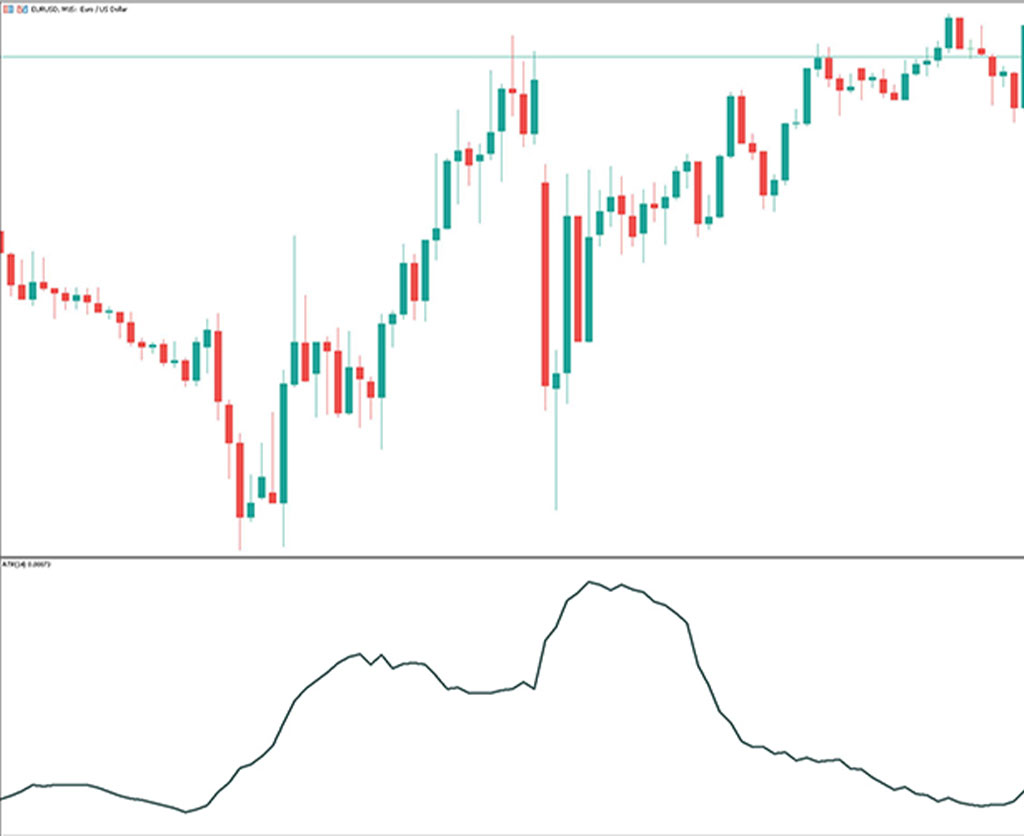
If the trader sees that the price has failed to break above a key resistance level and is starting to move lower, they might consider entering a short position to take advantage of the potential downtrend.
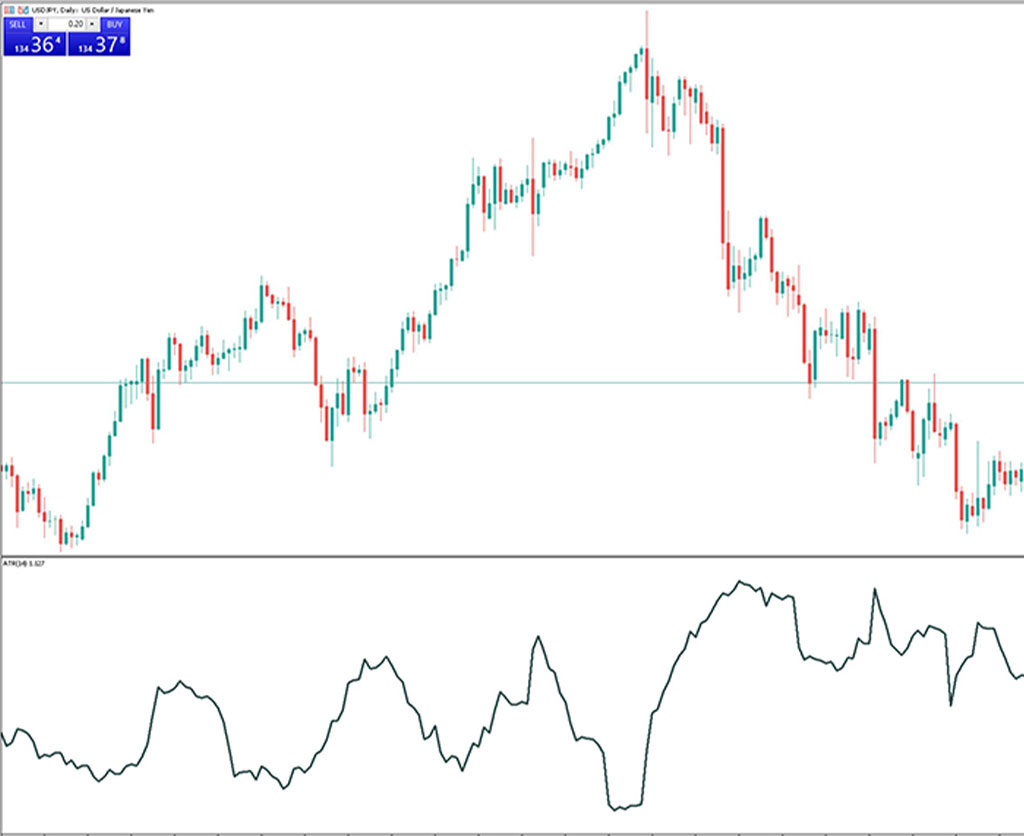
In this example, you are using the ATR indicator to identify potential trends and enter the market when volatility is increasing. By waiting for confirmation of a trend reversal and using the ATR indicator to manage risk, you are potentially increasing your chances of a successful trade.
By using the ATR indicator to establish entry and exit points and identify potential trends, traders can potentially increase their profits and manage risk more effectively. It is important to remember, however, that no indicator can predict market movements with complete accuracy, and traders should always exercise caution and use proper risk management strategies when trading.
Customizing the ATR
Customizing the ATR indicator to reduce lagging can help traders identify trends earlier and potentially improve their trading performance. Here are some ways to customize the ATR indicator to reduce lagging:
Change the time period:
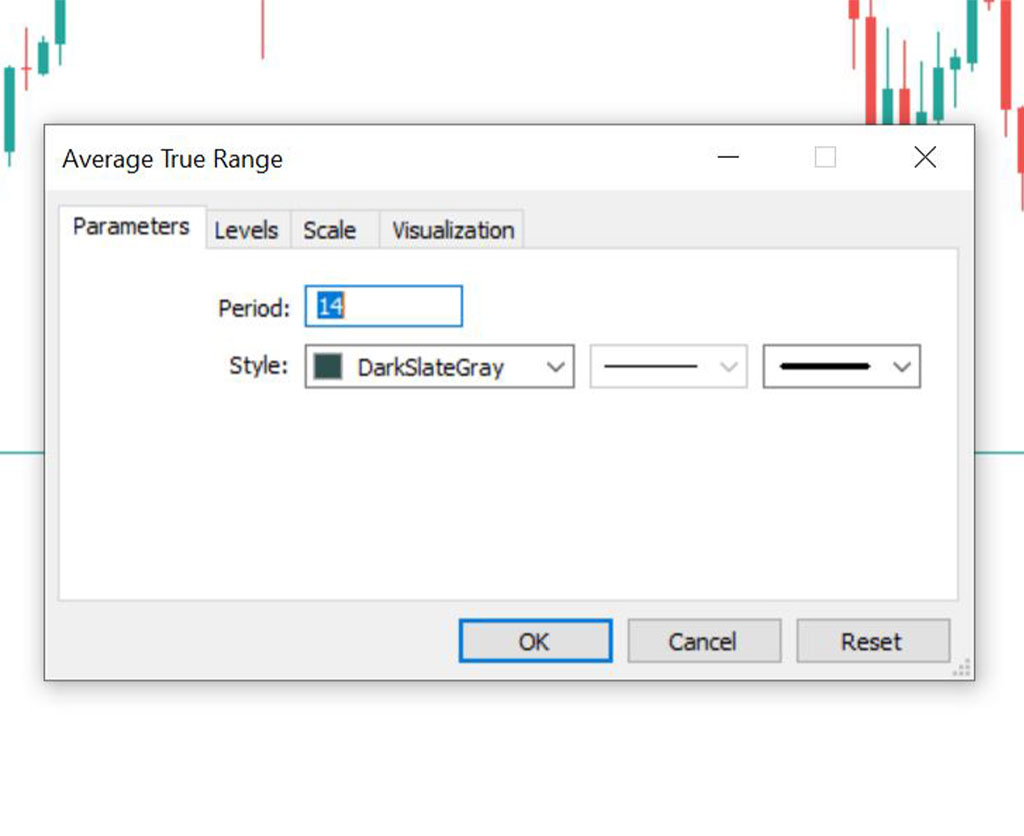
By default, the ATR indicator is calculated using a 14-period setting, which means it takes the average of the true range over the past 14 periods. However, traders can adjust the time period to suit their trading style and preferences.
Use a smoothing function (available on TradingView):
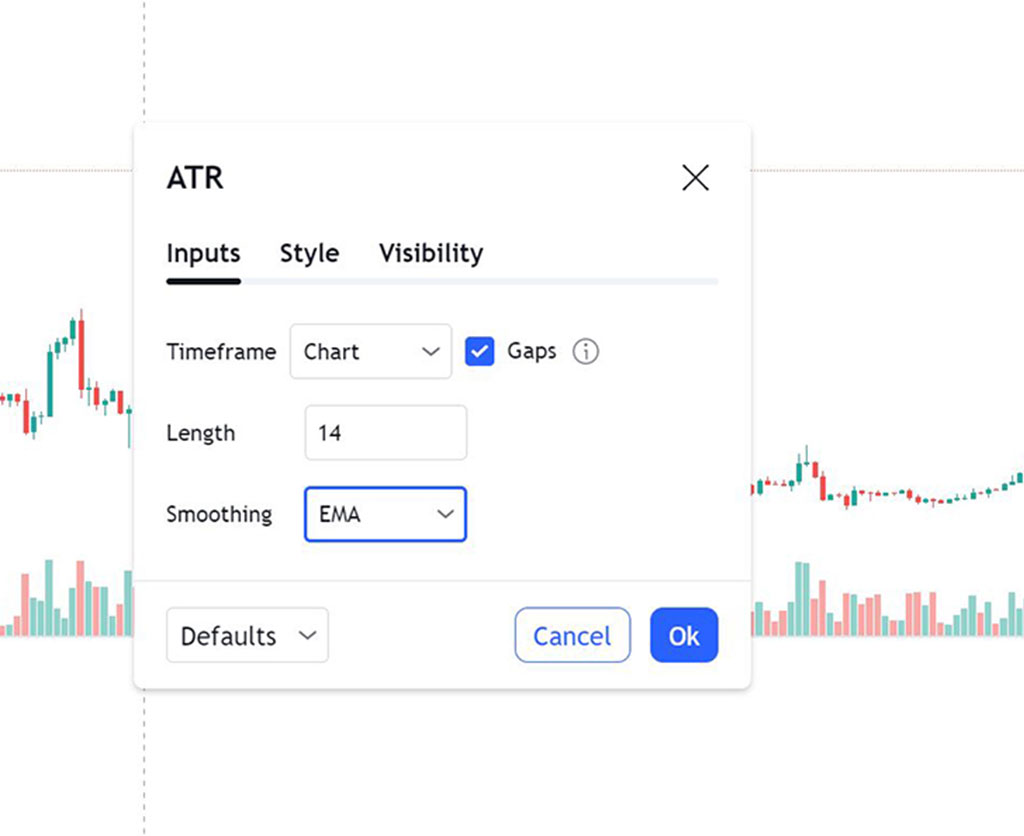
Another way to reduce lagging is to apply a smoothing function to the ATR indicator. This can help eliminate noise and provide clearer signals. One common smoothing function is the Exponential Moving Average (EMA), which gives more weight to recent data points and reduces the impact of older data points.
Combine with other indicators:
Traders can also combine the ATR indicator with other technical indicators to get a more complete picture of the market. For example, combining the ATR with a trend-following indicator such as Moving Averages can help identify trends earlier and potentially reduce lagging.
Adjust the multiplier:
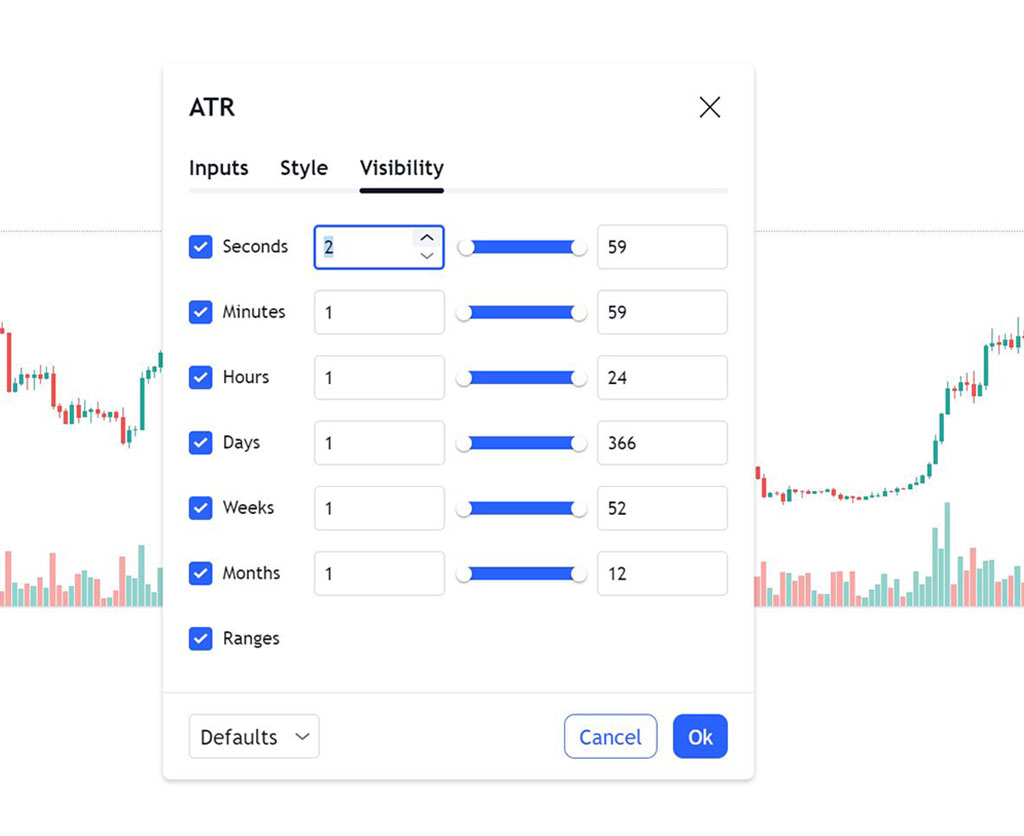
Lastly, traders can adjust the multiplier used in calculating the ATR to increase or decrease its sensitivity. By default, the ATR multiplier is set to 1, but traders can increase it to get more sensitive signals or decrease it to get more stable signals.
Overall, customizing the ATR indicator to reduce lagging requires experimentation and practice.


